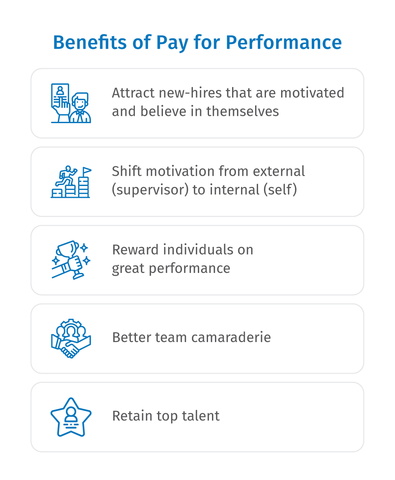How to find, attract, and keep quality warehouse labor in 2022
The pandemic has been disruptive for everyone, but it has especially devastated the labor market. Warehouse labor shortages are one of the most significant problems in the industry right now, and there are a variety of reasons for it. New regulations have forced warehouses to physically restructure their processes, the pandemic itself has discouraged workers from being in confined spaces with other people, and government relief bills have made those decisions temporarily viable for those workers. The systems have changed, the workers don’t wish to work in these environments, and they’re incentivized not to.
So how do we bring these people back into the warehouse? What incentives can we provide? What actions can we take to work around this labor shortage?
Pay for Performance
We’ve written about Pay for Performance systems before, but it’s worth mentioning again here. We’ve seen a strong uptick in requests for Pay for Performance during the pandemic, as compared to last year, pre-pandemic. The reason is the same, regardless of industry: 3PL, retail, e-commerce, wholesale distribution, or production. Operations leaders know that they need Pay for Performance incentives to be competitive.
When workers feel that their effort is directly and fairly rewarded–beyond their baseline pay–then they’re simultaneously incentivized to do their best work, and do so more efficiently and independently. Implementing a pay for performance system can attract new warehouse labor into your facility, AND help retain your best people.
The best way create a Pay for Performance plan at your operation is to base your rewards system on a fair set of labor standards that are achievable and well-communicated. This also has the side effect of potentially offsetting the realities of the labor shortage. Properly designed Pay for Performance programs can cause large productivity gains, so you might be able to make up a workforce deficit without hiring anyone new, especially if you supplement your existing team with new technology that allows productivity gains to be quantified and self-monitored.

The best part? If done right, PFP can actually save you money, while also making you stand out from your competitors. An effective and well-planned program is self-funding; a portion of the savings you make from your workers’ efforts goes into their pockets, resulting in a net monetary gain for everyone involved. Who wouldn’t be interested?
Adjust Your Advertising
Job descriptions and advertising can make a big difference in both quality and quantity of new candidates. But right now, there are a lot of ads and a lot of competition. To rise above the noise, you need to say the right things, and make your points in as few words as possible. Then make it easy for a candidate to apply instantly on any mobile device–even if the ad is on a sign or postcard.
What to say: Warehouse workers’ jobs are important; they serve a critical purpose in the supply chain, and that should be emphasized. Presenting these jobs as careers to be pursued instead of rote menial labor can simultaneously make the job more appealing to a potential hire, and help an applicant imagine growing into a career that has greater possibilities.
Amazon is a good example of this; their warehouse job descriptions are lively, positive, and suggest a fast-paced and fun working environment. They combine this with employee testimonials to highlight a sense of community and fulfillment.
Adapting–and committing to–some of these practices might entice more job-seekers to your warehouse worker positions. If you can promise a job with training, competitive pay, upward mobility, and stability, and deliver on that promise, you’ll have a loyal set of warehouse workers for many, many years.
Assure safety: We’re in a pandemic environment that may well extend into 2021. Workers want to work–that’s how they are able to keep food on the table, pay their bills, travel, and participate in society–but many of them feel that certain environments are not safe for work. In your advertising, be clear about the steps you’ve taken to keep them safe: sanitation, shielding, PPE, and so on. Show them that you care about their safety, and you’ll have addressed the largest, most legitimate fear that the potential worker has.
Do these take-aways:
- Gather quotes from happy team members
- Identify types of upskilling and training you can offer
- Assure safety – both from COVID, and from injuries
- Emphasize diversity in your workforce, and encourage everyone to apply. Use photos and words to communicate this.
- Include a text-to-apply code on for fast application submissions, straight from a cell phone. That way you can capture people’s phone numbers to follow up.
- Include a QR code that links to an application that can be filled out on mobile devices. This gives the candidate can quickly start the process and strike while the iron is hot.
Offer Upskilling
The unstoppable onward march of technological progress might naturally disincentivize workers from committing to a warehouse worker position. After all, why take on a career that researchers fear will be eliminated any time in the next five to ten years?
Putting aside the fact that automation is not projected to replace warehouse workers’ jobs any time soon, and that automation is incapable of replacing many warehouse jobs entirely, there is a way to bridge the gap and alleviate their concerns: offer a road to growth.
We find ourselves again turning to Amazon as an example; they’ve recently pledged $700 million to upskill 100,000 of their workers into technical and non-technical jobs by 2025. By promising investment in their workers, Amazon is telling potential hires that they can start in the warehouse, and work their way up to something greater.
Investing in an internal worker education program can:
- Encourage unemployed workers to apply for jobs at your facilities
- Encourage consistent effort and loyalty from those workers who want to take advantage of the opportunities you provide
- Provide a reliable source of internal promotions and long-term career employees
- Improve your operating efficiency over time, as workers already familiar with your operations rise to new positions
Investing in your warehouse workers is one of the most consistent ways to ensure their loyalty, encourage perpetual growth, and stand out from your competitors.
To wrap this all up, our final piece of advice is simple and easy to understand. We’re looking at a shortage in the labor market; the labor market is looking for the best place to work. Do you want to hire new people? Be that place.





